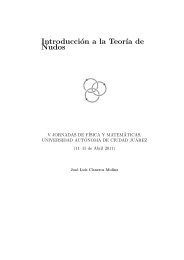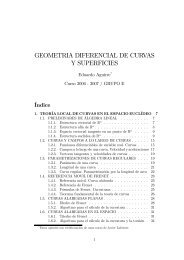Tao_T.-Analysis_I_(Volume_1)__-Hindustan_Book_Agency(2006)
Tao_T.-Analysis_I_(Volume_1)__-Hindustan_Book_Agency(2006)
Tao_T.-Analysis_I_(Volume_1)__-Hindustan_Book_Agency(2006)
Create successful ePaper yourself
Turn your PDF publications into a flip-book with our unique Google optimized e-Paper software.
1.2. Why do analysis? 7<br />
However, despite the reasonableness of this statement, it is actually<br />
false! Here is a counterexample:<br />
1 0 0 0<br />
-1 1 0 0<br />
0 -1 1 0<br />
0 0 -1 1<br />
0 0 0 -1<br />
If you sum up all the rows, and then add up all the row totals,<br />
you get 1; but if you sum up all the columns, and add up all the<br />
column totals, you get 0! So, does this mean that summations<br />
for infinite series should not be swapped, and that any argument<br />
using such a swapping should be distrusted? (See Theorem 8.2.2<br />
for an answer.)<br />
Example 1.2.6 (Interchanging integrals). The interchanging of<br />
integrals is a trick which occurs in mathematics just as commonly<br />
as the interchanging of sums. Suppose one wants to compute the<br />
volume under a surface z = f(x, y) (let us ignore the limits of<br />
integration for the moment). One can do it by slicing parallel<br />
to the x-axis: for each fixed value of y, we can compute an area<br />
J f(x, y) dx, and then we integrate the area in they variable to<br />
obtain the volume<br />
V = j j f(x,y)dxdy.<br />
Or we could slice parallel to the y-axis for each fixed x and compute<br />
an area J f(x, y) dy, and then integrate in the x-axis to<br />
obtain<br />
V = j j f(x,y)dydx.<br />
This seems to suggest that one should always be able to swap<br />
integral signs:<br />
j j f(x, y) dxdy = j j f(x, y) dydx.











